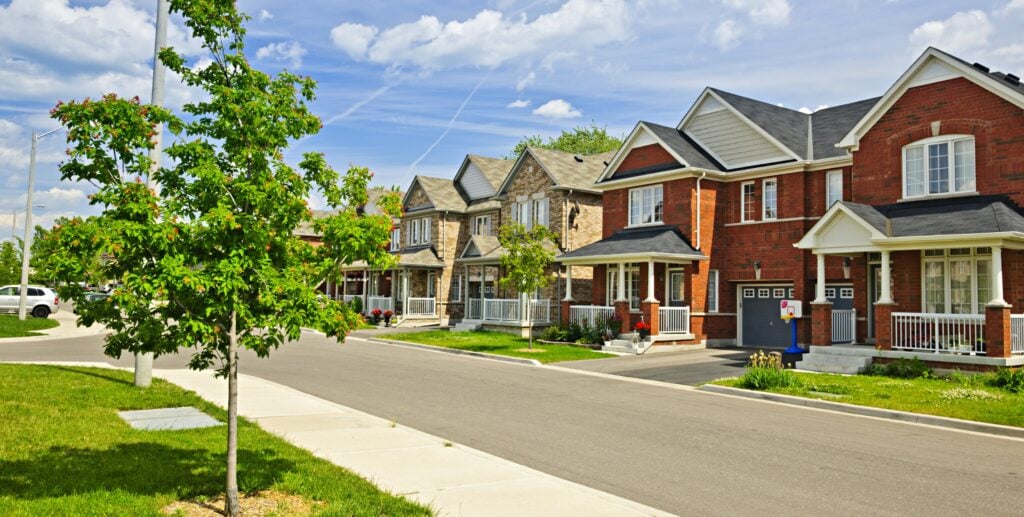Who needs bricks when you have bottles? Or concrete when you have hemp? In a world increasingly driven by sustainability, innovation, and sheer audacity, a revolution in residential architecture is taking shape.
Forget your standard timber frames and concrete slabs — these new home designs go beyond the pale.
From discarded everyday items to ancient, earth-friendly methods, these astonishing dwellings challenge everything you thought you knew about shelter.
Get ready to explore some of the most surprising and repurposed material homes on the planet.
LEGO House, Surrey, UK
Though now demolished, James May’s life-sized LEGO house, constructed in 2009 for the BBC series “James May’s Toy Stories,” remains an iconic feat of imagination.
With the help of 3.2 million plastic bricks and 2,000 volunteers, the “Top Gear” presenter fulfilled a childhood dream by building a fully functioning home — complete with a LEGO bed and LEGO tables and chairs.
"From a design perspective, it’s not the most practical choice—LEGO blocks don’t offer much in the way of insulation or comfort,” commented director at Ace Property Agency, Rebecca Cardamone.
A full-size house made entirely with Lego bricks at Denbies Wine Estate in Dorking, Surrey. Picture: Getty
“But while it may not be the most functional long-term living solution, it beautifully captures the playful spirit of design and reminds us that architecture can be both imaginative and inspiring. It also reminds us of the happiness colour can bring.”
Phoenix Earthship, New Mexico, USA
Originally championed by architect Michael Reynolds in the 1970s, Earthships are self-sufficient homes often constructed using old tires packed with earth. These "tire-bricks" provide incredible thermal mass, regulating indoor temperatures naturally.
The Phoenix Earthship at the Greater World Community, in Tres Piedras, Taos, New Mexico. Picture: Getty
Beyond tires, Earthships often incorporate other reclaimed materials like glass bottles and cans, coupled with sophisticated systems for rainwater harvesting, solar power, and even internal sewage treatment.
These homes aren't just built from bizarre materials; they're entire ecosystems designed for off-grid living.
“This amazing example of an Earthship shows how a house can supply its own power, water and food, while being built from what most people throw away,” said group director at finance and property advisory consultancy business, Highfield Private, Steven Tropoulos.
The living room area at the Phoenix Earthship. Picture: Getty
“Rammed-earth tyres form the thick thermal-mass walls, glass bottles and aluminium cans create patterned infills, and passive-solar glazing, rooftop photovoltaics and rain-catchment cisterns let the building run entirely off-grid.”
Tubohotel, Tepoztlan, Mexico
Ingeniously repurposing large concrete stormwater pipes into compact sleeping pods, the Tubohotel is as creative as it is functional.
The Tubohotel in Mexico has converted concrete stormwater pipes into compact sleeping pods. Picture: Facebook / Tubohotel
Arranged in a pyramid formation, inspired by local Aztec architecture, each individual pod includes a bed and minimal ventilation with shared bathrooms nearby.
“Repurposing infrastructure materials into innovative hospitality spaces is a playful reuse project that allows for affordable accommodation," said Dr Mardiasmo.
Each individual pod includes a bed and minimal ventilation with shared bathrooms nearby. Picture: Facebook / Tubohotel
“While posing challenges for comfort and hygiene, it does showcase how unconventional materials can be transformed into a memorable and culturally resonant experience.”
Boeing 727 Forest Home - Hillsboro, Oregon, USA
Imagine stepping out of your shower, walking past first-class passenger seats, and grabbing a snack from a food cart — and all within the body of a retired jetliner. That's the day-to-day life of Bruce Campbell, a former electrical engineer who turned a decommissioned Boeing 727-200 into his unconventional home.
Bruce Campbell lives in a Boeing 727 Jet. Picture: Getty
Parked on his ten-acre woodland block, the retiree’s unusual pad doubles as an educational venue that invites visitors to rethink how we dispose of obsolete aircraft.
“The owner spent about US$220,000 turning the fuselage into a fully-functional, partly solar-powered dwelling,” commented Mr Tropoulos.
In 2004 Bruce Campbell completed the deal and the plane was shipped to him in Portland in many parts that he has fastidiously reassembled. Picture: Getty
“Original passenger seats, lockers and food trolleys mingle with a shower in the old lavatory and the home’s running costs sit at roughly a mere US$370 per month.”
Hemp houses, Butterwick, NSW, Australia
It wasn’t that long ago that if you mentioned your house was made of hemp, you’d get some strange looks. But today, hempcrete is quickly becoming a celebrated building material.
Made from renewable resources (hemp) and absorbing carbon dioxide during its curing process, each hemp wall takes on the triple role of the exterior wall, insulation and the interior Gyprock.
“The use of hemp masonry is such a smart move,” said Ms Cardamone.
“It offers amazing thermal performance and breathability, and the fact that it’s compostable just adds to its appeal. It’s a material that’s both efficient and environmentally responsible."
This eco village in Butterwick uses hemp masonry. Picture: realestate.com.au/sold
And this eco village in Butterwick, NSW, is the effect example.
"The first eco village of its kind in the area, the village features four hemp houses, which are part of a broader initiative to create a sustainable community with a focus on off-grid living and locally sourced materials," said Ms Cardamone.
La Casa de las Botellas, Puerto Iguazu, Argentina
Known as the Bottle House, this family-built home in the subtropical province of Misiones, Argentina, is the result of waste being repurposed into architecture.
Its walls are made from roughly 1,200 plastic bottles, its roof is tiled with 1,300 recycled Tetra-Pak cartons, and even its doors and windows are framed with more than 140 discarded CD cases.
"Inside bottle-stuffed armchairs and a bed made from 200 bottles continue the theme,” said Mr Tropoulos.
“The creator's primary goal was to raise environmental awareness and demonstrate a creative use for materials that would otherwise contaminate our natural habitat and it proves that you can raise an entire house, and its furniture, out of the rubbish bin."



















 English (US) ·
English (US) ·